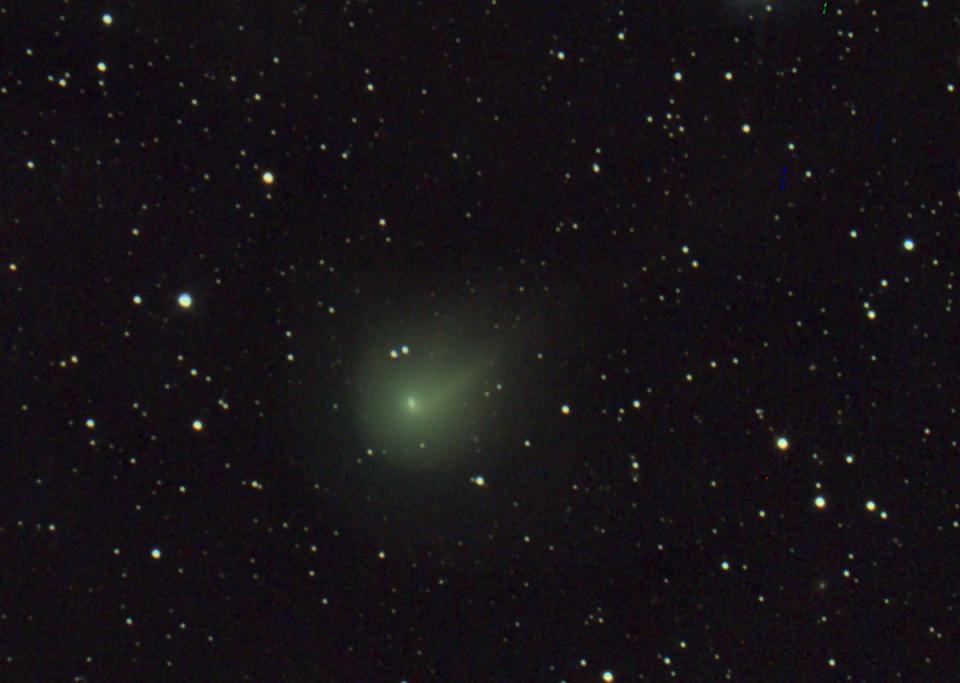There's a Devil Comet? Yes, and you'll be able to see it soon
It's called the Devil Comet, but in reality it's not really scary and seeing it in coming weeks will be an opportunity of a lifetime.
"It's always very exciting," said Donna Pierce, associate professor of astrophysics at Mississippi State University. "For most people, it's a once-in-a-lifetime event."
The comet's name is 12P/Pons-Brooks. According to NASA, like other comets, it's a snowball of frozen gases, rock and dust that orbits the sun. As comets' orbits take them closer to the sun, they heat up and spew gases and dust that make them more visible and form tails that can stretch millions of miles.
That's what is happening to Pons-Brooks.
"Right now, as we speak, it's working its way toward the sun," Pierce said. "Right now, all that has come across my desk indicates that the comet will be visible in the coming weeks and months, but you'll need a pair of binoculars or a telescope to see it."

Why is it called the Devil Comet?
Pierce explained the bright area around the head of a comet is called a coma. When a comet erupts, or has an outburst, it gets brighter and the coma forms structures that look like fans, arcs or jets. Pons-Brooks is prone to outbursts and some thought the jets looked like devil horns.
And, let's face it, Devil Comet sounds better in a headline than 12P/Pons-Brooks.
Solar eclipse 2024: How to watch it and what it will look like in Mississippi
Why is seeing Comet 12P/Pons-Brooks a once-in-a-lifetime event?
Like Earth, Pons-Brooks orbits around the sun. Earth is about 93 million miles away from the sun and, as you already know, it takes one year to complete an orbit. That 93 million miles is the equivalent of a measurement known as an Astronomical Unit.
Pons-Brooks is a tad farther out in space. The distance between it and the sun varies considerably due to it's highly elliptical path. According to Space Reference, it can be as close as 0.78 AU and reaching as far as 33.58 AU from the sun.
So, it takes Pons-Brooks just over 71 Earth-years to complete an orbit which means it is only visible to the average person every 71 years.
When to see the Devil Comet and what to expect
According to NASA, Pons-Brooks may be visible to the naked eye by April and is expected to reach peak illumination on April 21. Chris Sirola, associate professor of astronomy and physics at the University of Southern Mississippi, explained what to expect.
It will be visible in the early morning skies, a few hours before sunrise, during March.
It will be traveling through several constellations, spending most of its time in Andromeda.
It will officially be visible to the naked eye, but barely. An observer will need to be in a very dark location with no city lights etc. and have a good map showing the specific position to look for any given night.
The comet is expected to reach about +5 magnitude. For non-astronomers, that's barely above the threshold of visibility.
The comet will change brightness as it moves through the sky, starting the month of March around +7 magnitude, too dim to see with the naked eye, and slowly brightening. Comets can look brighter as they get closer to the sun and/or us.
The comet may be visible during the solar eclipse of April 8, but that's not guaranteed. This would only apply for the few minutes of totality, which we won't be getting in Mississippi, and observers would probably need telescopes trained right at it to see it.
Do you have a story idea? Contact Brian Broom at 601-961-7225 or bbroom@gannett.com.
This article originally appeared on Mississippi Clarion Ledger: Devil Comet to make 71-year trip near Earth soon: What to expect

